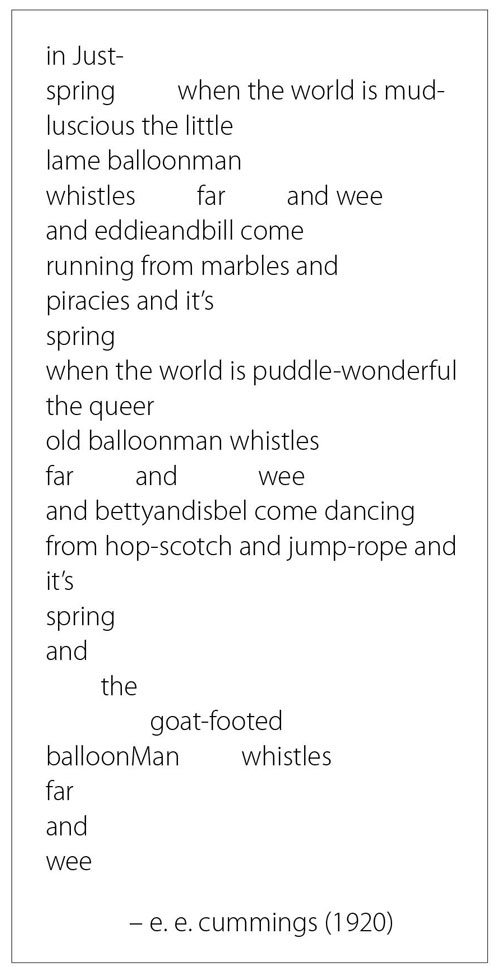By Clover Carroll
 Ah, to be in Crozet, now that April’s here! But wait—lucky me, I am! I doubt the England originally celebrated by Robert Browning (1812-1889) in this line from “Home Thoughts from Abroad” could hold a candle to the glorious explosion of leafy greening, blossoming, and wildlife appearing all around us at this time of year.
Ah, to be in Crozet, now that April’s here! But wait—lucky me, I am! I doubt the England originally celebrated by Robert Browning (1812-1889) in this line from “Home Thoughts from Abroad” could hold a candle to the glorious explosion of leafy greening, blossoming, and wildlife appearing all around us at this time of year.
And one of the earliest, most magical harbingers of the season in our blessed little corner of the world is the wild, ethereal trill of the spring peeper frogs, pulsing through the dusk from March through May. This year, I first heard them earlier than ever, on March 1, and the warmer it gets, the louder their chorus—now sometimes accompanied by the bass thrumming of the bullfrogs. Sounding like a cross between a piccolo, a katydid, and the music of the spheres, the rhythmic “advertisement” call of genus pseudacris crucifer arises from shallow ponds, creeks, and other swampy areas in a mystical celebration of spring, as males notify females of their suitability for mating. My heart leaps up when I behold the lovesong of the peepers! Clearly poets love the spring as much as we do; this echoes William Wordsworth (1770-1850), and our title comes from William Blake’s Songs of Innocence (1789).
When I first moved to Charlottesville in 1977 to attend graduate school at the University of Virginia, we lived in a relatively remote Greenwood cottage near Newtown. Driving around the hairpin turn on Rt. 690 one evening that spring, my husband and I, both of whom had grown up in the city, were bewildered by a loud, high-pitched, rhythmic chorus of sound, the likes of which we had never heard before. Was it insects? Birds? Aliens? We couldn’t imagine, and were amazed eventually to learn from local residents that it was, of all things, frogs! Slated for development, that swampy area has since been filled in, but you can hear a similar level of enthusiasm now at King Family Vineyard, which has several ponds and low watery areas on the property. Once, while exploring property in Advance Mills, we were astonished to see that this commanding chorus is created by hundreds of tiny, translucent amphibians, each measuring between 1 and 1.5 inches, and weighing a mere 0.11 to 0.18 oz! If you are similarly puzzled by the sound of distant fluting music in the dusk, it is probably the peepers, wailing away in the wild joy of awakening. The sound is blissful, ecstatic, and mesmerizing.
I will leave the biology (aka herpetology) of these amazing creatures to my fellow science columnists, Marlene and Dirk; I am more interested in their possible role in folklore and legend. I have written previously (April 2010 issue) about my favorite spring poem, “In Just-” by e.e. cummings (1894-1962). In this poem, the three-peat of the “little lame balloon man” whistling “far and wee” is a reference to Pan, Greek god of wild nature, fertility, and rustic music, as he ushers in spring on his reed “pan pipes.” This meaning is made clear by his further description as a “goat-footed balloonman,” referring to the myth that Pan had the hindquarters, legs, and horns of a goat, like a faun or satyr. The Native Americans of the Southwest U.S., including the Hopi and other tribes, also venerated a spring flute player, namely, the fertility deity Kokopelli, appearing in petroglyphs and pottery as early as the first century AD. Kokopelli’s flute-playing not only chases away the winter and brings about spring, but also represents the spirit of music. This trickster god usually appears with feathers or antennae adorning his head, so he may have had his origin as a singing insect (such as a katydid). Many tribes, such as the Zuni, also associate Kokopelli with the rains.
I have often thought that these two spirits of music in nature have something in common. In both mythologies, these messengers of spring are heard and not seen as they mark—even cause—Earth’s awakening with their ecstatic, almost erotic, whistling. Might not the distant, mysterious piping attributed to Pan in Greek mythology have been the singing of frogs similar to peepers? And might not the myth of Kokopelli also have been inspired by Southwestern singing amphibians, who increase in number with increased precipitation? Since online guides to frogs rarely include their calls, my research on frogs in these far-flung locales has proven inconclusive. But it seems to me to be a strong coincidence that three cultures—the ancient Greek, Native American, and our own—have detected a musical herald of spring in nature.
So whenever I hear the jubilant, hypnotic symphony of the spring peepers, I think of Pan and Kokopelli piping in the season, and of our distant ancestors creating these myths to personify the mystical beauty and music that surround us as the earth reawakens each spring. By this way of thinking, the froggy chorus links us, not only to nature, but also to our imaginative, literary, and spiritual past.
To learn more about the frogs and toads of Virginia, visit virginiaherpetologicalsociety.com/amphibians/frogsandtoads/frogs_and_toads_of_virginia.htm After clicking on the name of a particular frog, click on the speaker icon to hear its call.











